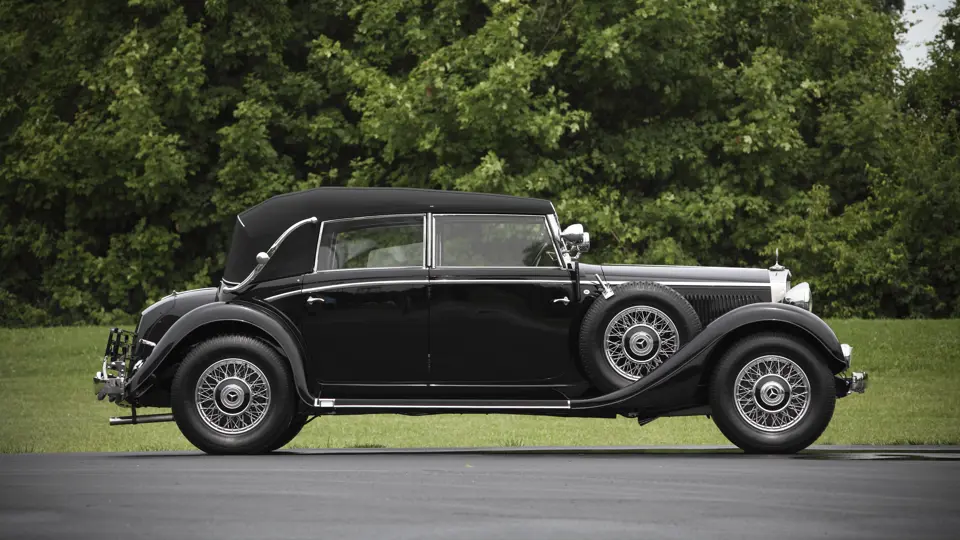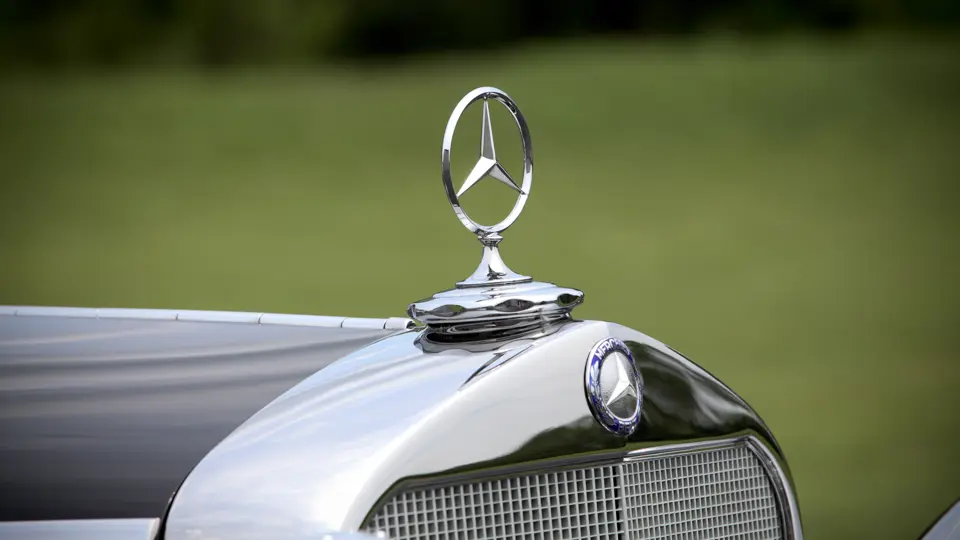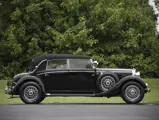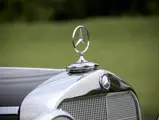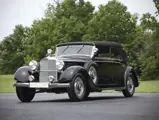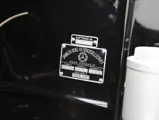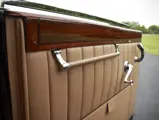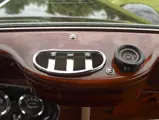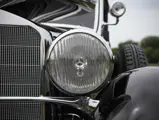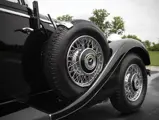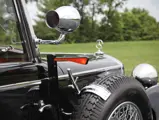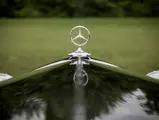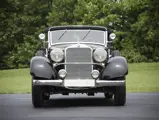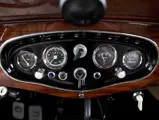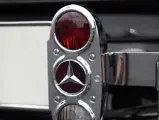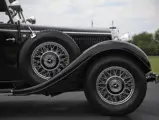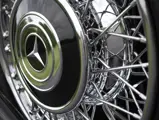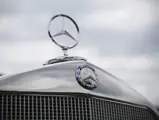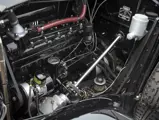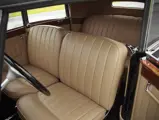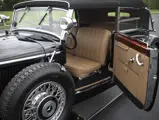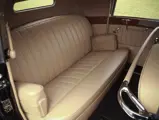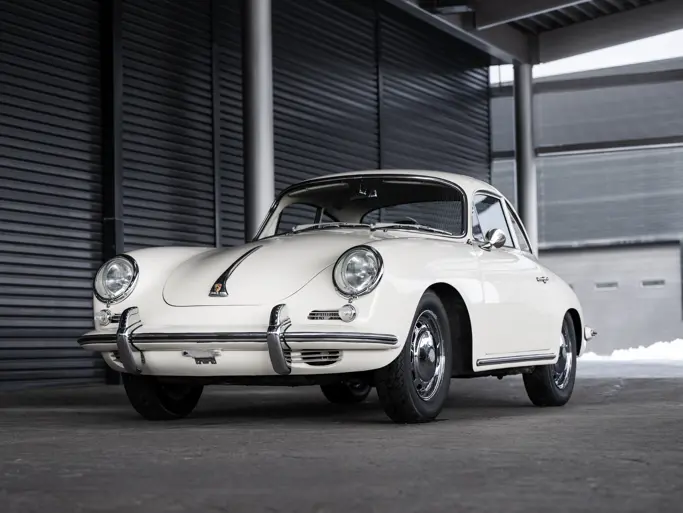Although this car was properly called a “roadster” by its manufacturer its body type, with wind-up windows, is more properly referred to as a “cabriolet.
60 hp, 2,867 cc side-valve inline six-cylinder engine, four-speed manual gearbox, leaf and coil-sprung front suspension, floating rear axle with coil springs, and four-wheel hydraulic drum brakes. Wheelbase: 102"
- Cornerstone mid-1930s Mercedes-Benz model
- Stately long-wheelbase Cabriolet D model; advanced engineering
- A former CCCA National First Prize award winner; well equipped
Daimler and Benz, competitors from almost the dawn of motoring, merged to form Daimler-Benz in June 1926. Their combined workforce was huge and numbered perhaps 20,000, yet combined production was barely 2,000 cars. The automobile, particularly in post-WWI Germany, which labored under the onerous restrictions of the Versailles Treaty, was still considered a luxury product. To this limited market, Daimler-Benz appealed with an offering of mid-range vehicles built in Mannheim and the essentially custom-built machines that were built in Untertürkheim near Stuttgart.
In 1933, a new Mercedes-Benz series, internally coded W 18, entered production and replaced the Type 350/370 Mannheim series. The new cars, more commonly known as the Type 290, heralded a number of advanced engineering features, and among them, they included hydraulic brakes, a transverse leaf-spring/coil-spring front suspension, a coil-sprung floating rear axle, and a 60-hp, 2,867 cc side-valve inline six-cylinder engine. In addition to the bare chassis for custom coachbuilders, six factory-built body styles and a Kuebelwagen (military) variant were available. They included a four-door touring car, a four-door sedan and four two-door convertibles or cabriolets (A, B, C, D) with seating for three or four.
The long-wheelbase 290 chassis debuted for 1934, with factory-bodied offerings including a six-seat touring car, a four-door sedan, four cabriolets (A, B, D and the F Pullman), a Pullman limousine, a streamlined sedan, a roadster and a bare chassis. Top speeds approached 65 mph with the long-wheelbase 290 fitted with a four-speed gearbox. In 1937, the new Type 320 succeeded the highly versatile 290 chassis. As represented by the car offered here, the Cabriolet D was recognizable by its unique combination of front-opening or “suicide” front doors and rear-opening rear doors, which heightened the visual impression of the car’s interior room.
According to Mercedes-Benz Classic Germany records, this stately long-wheelbase Mercedes-Benz 290 Cabriolet D, chassis 104569, was part of production series RB 10 18 17/18 and built at Mannheim. The car was eventually exported to the United States. Its restoration was completed in 2000. We understand it was shown at Pebble Beach in 2001 and won Best Interior at Ault Park in 2002 as well as a CCCA National First Prize.
Its dignified open four-door bodywork, long wheelbase and deep black finish are complemented by such exterior features as chrome wire wheels, dual side-mounted spare tires, driving lamps, dual Hella spotlights, a rear luggage rack, trafficators and a pair of landau irons. The interior is attractively trimmed in light tan upholstery and includes a wood grain dash, a full-width grab handle for the rear passengers and more. In short, this very elegant 1935 Mercedes-Benz 290 Cabriolet D is a lesser-seen motor car in today’s classic car market. A cornerstone model of Mercedes-Benz production in the mid-1930s, its event potential is wide and varied.


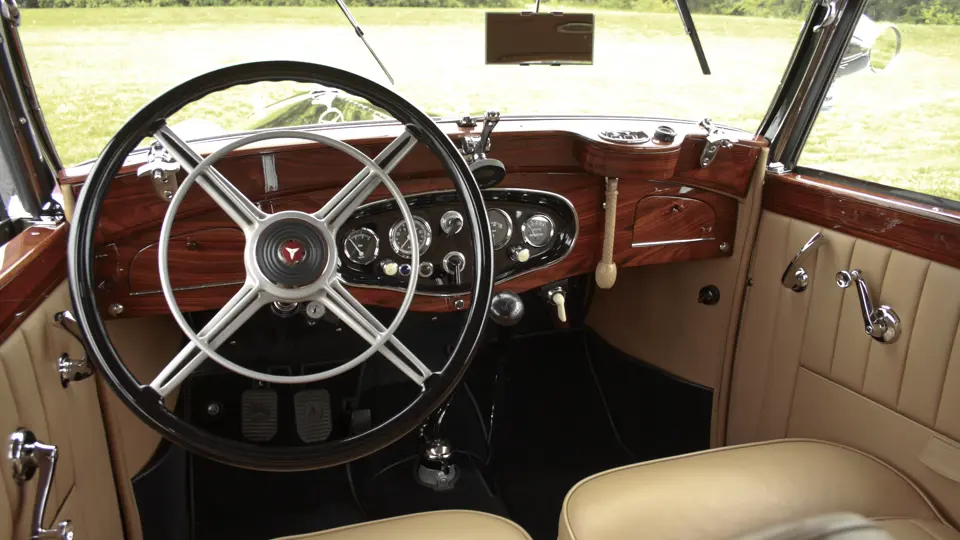

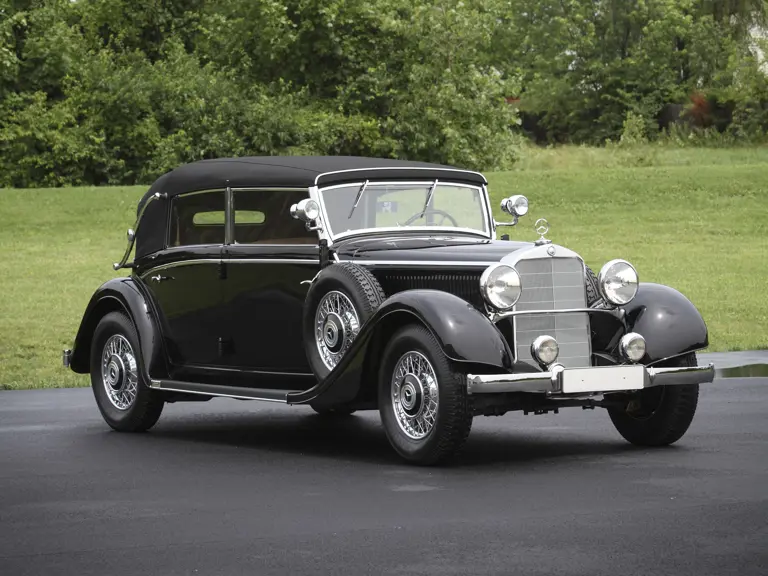
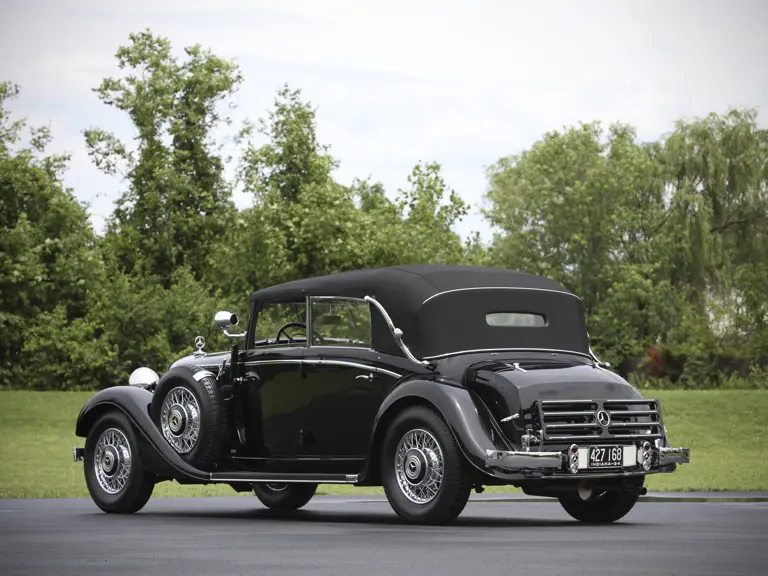
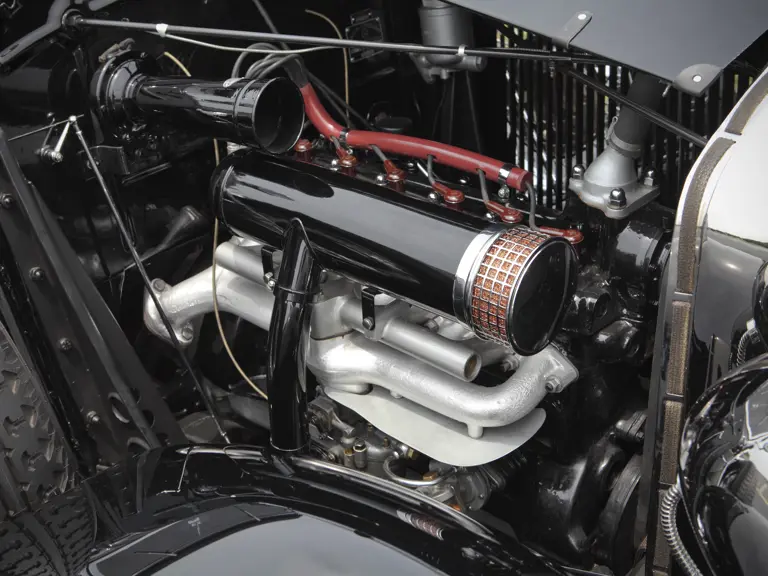

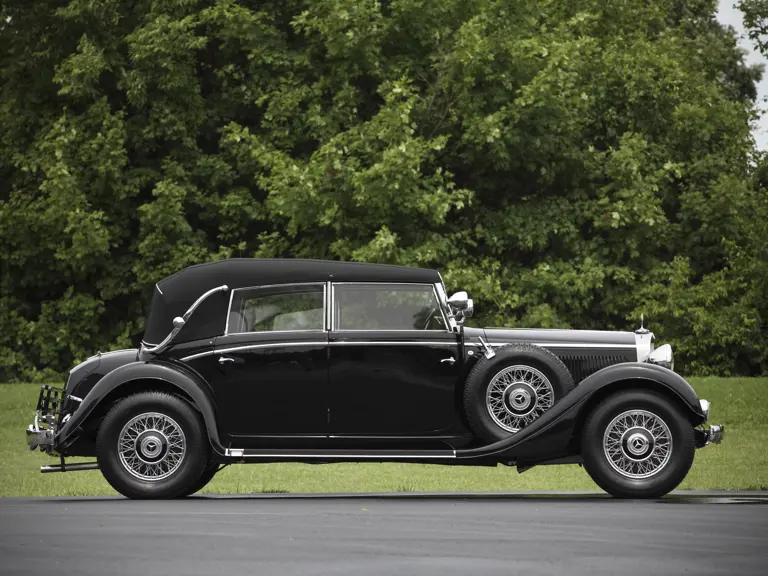

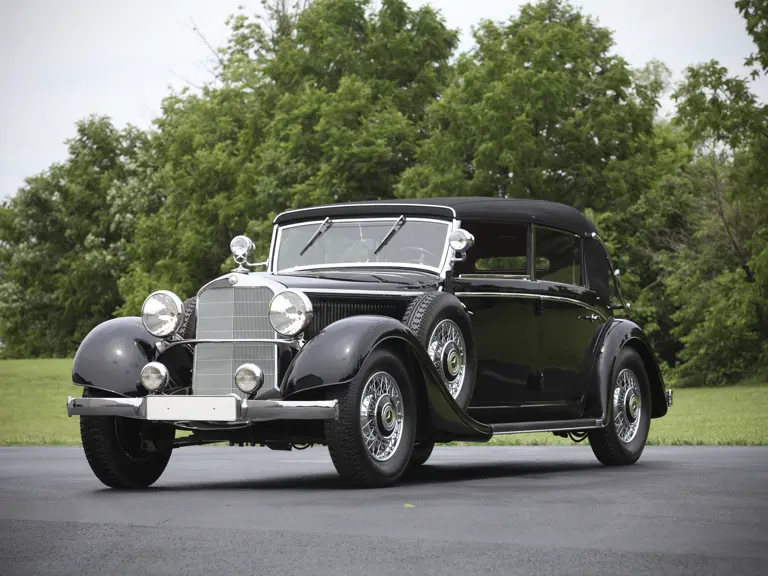



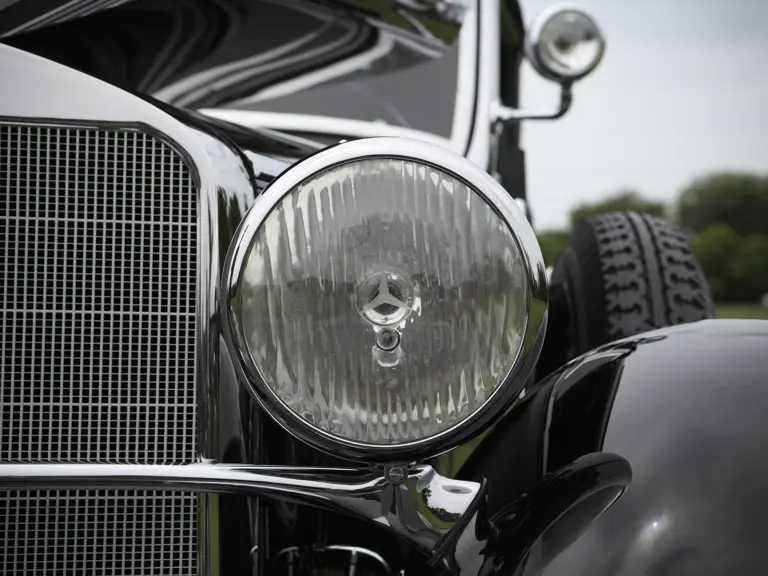
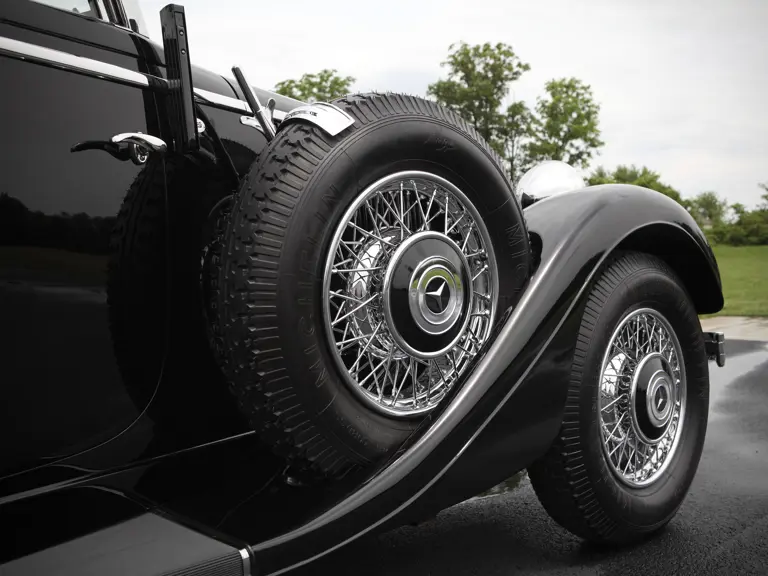
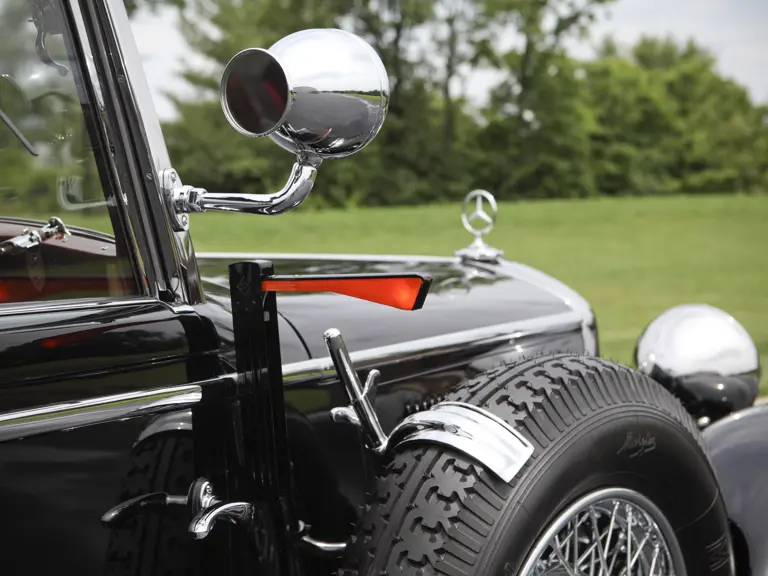
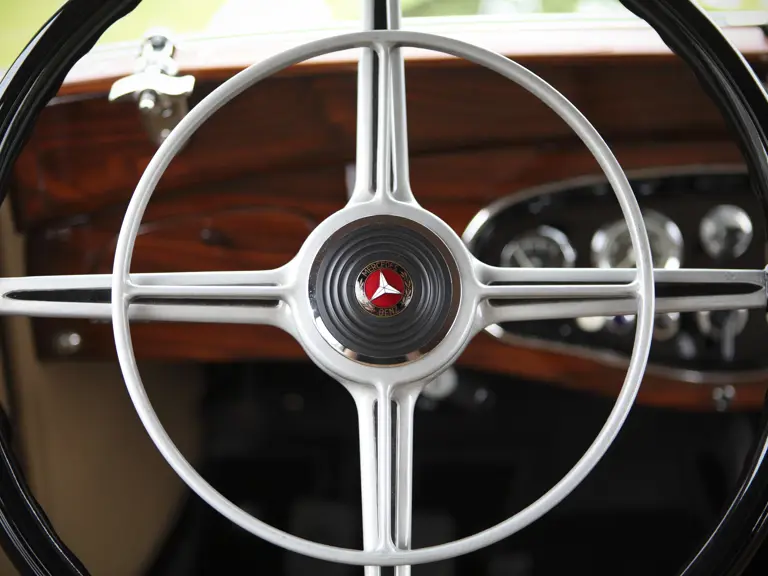
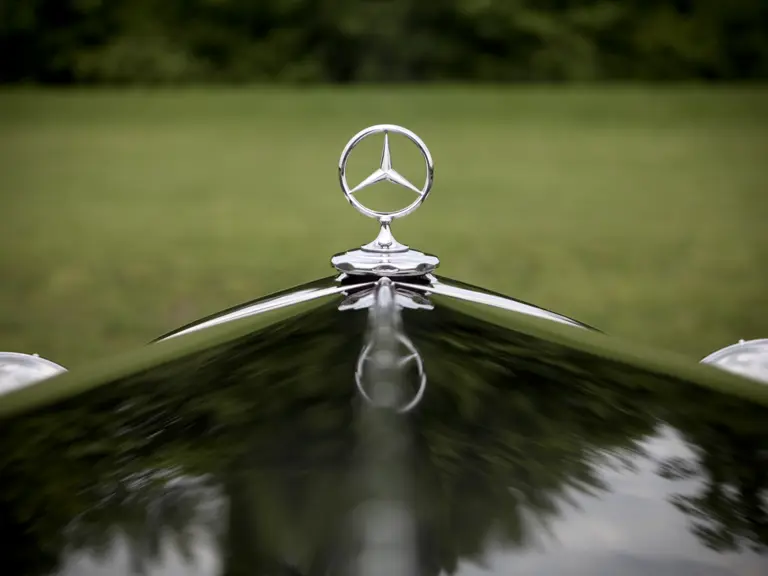
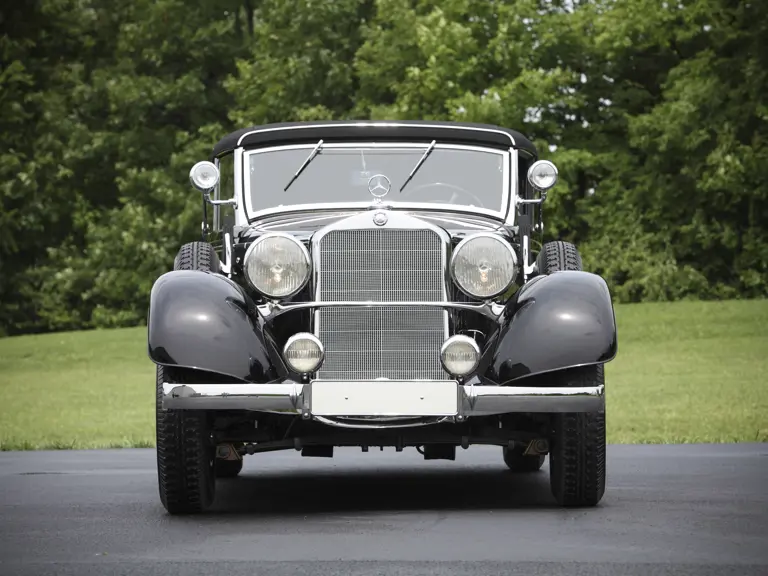
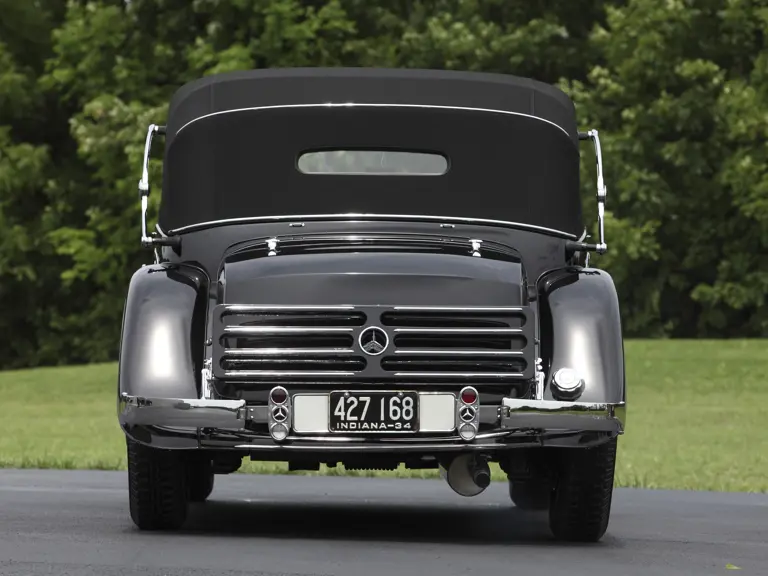
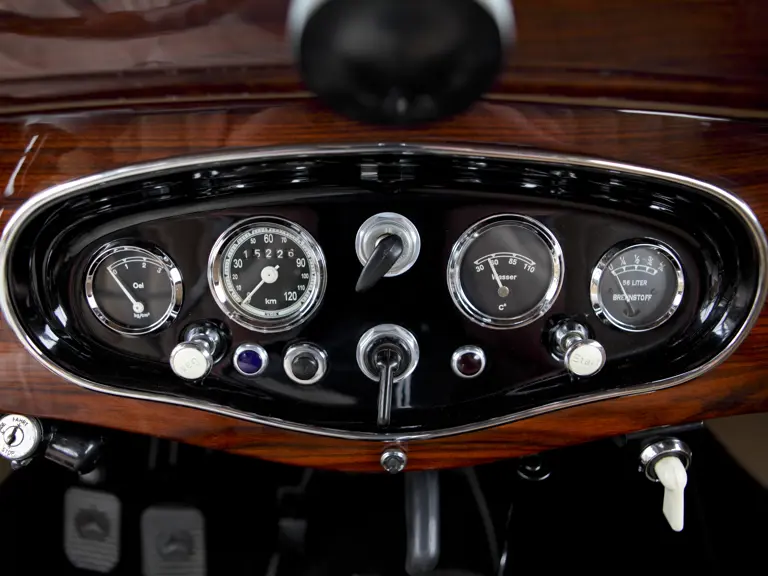
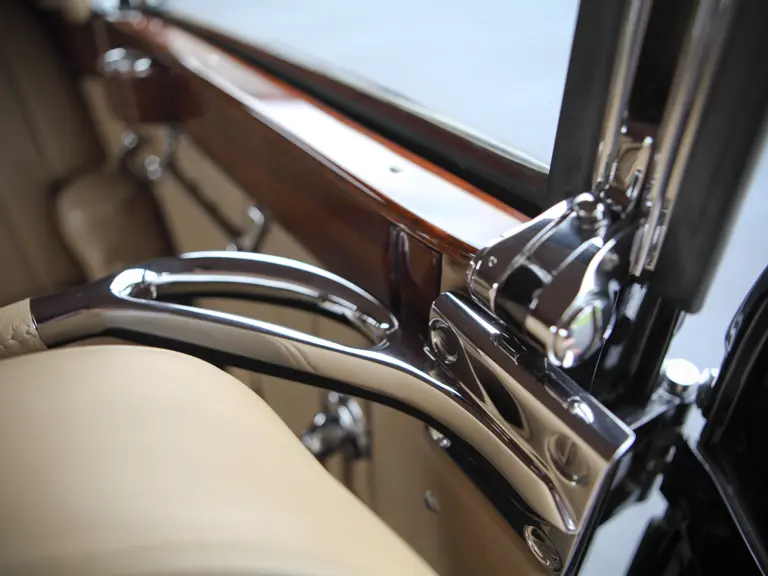
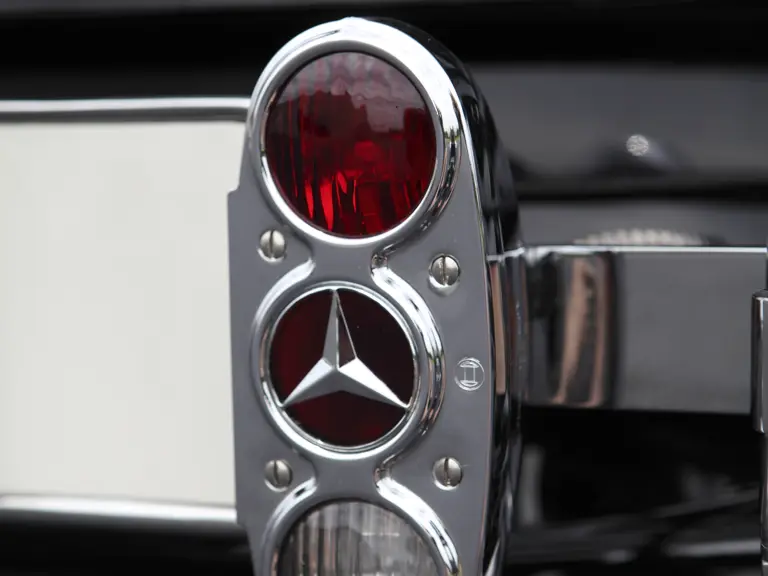
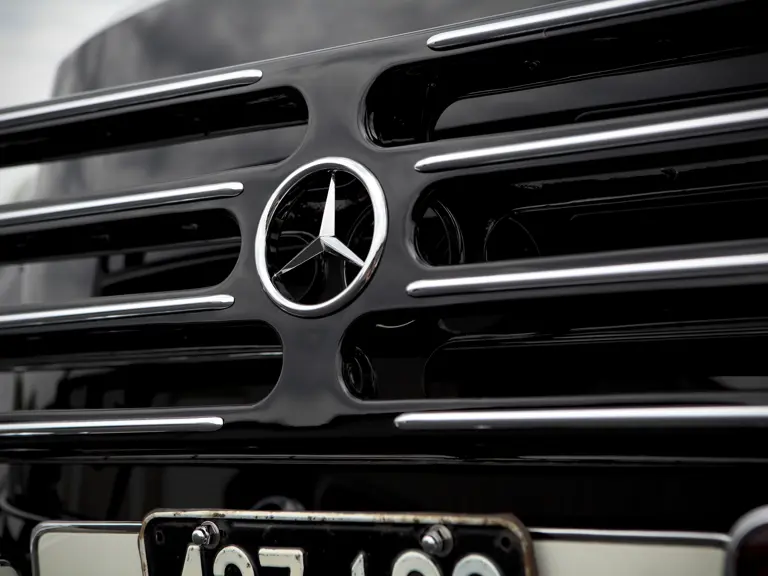
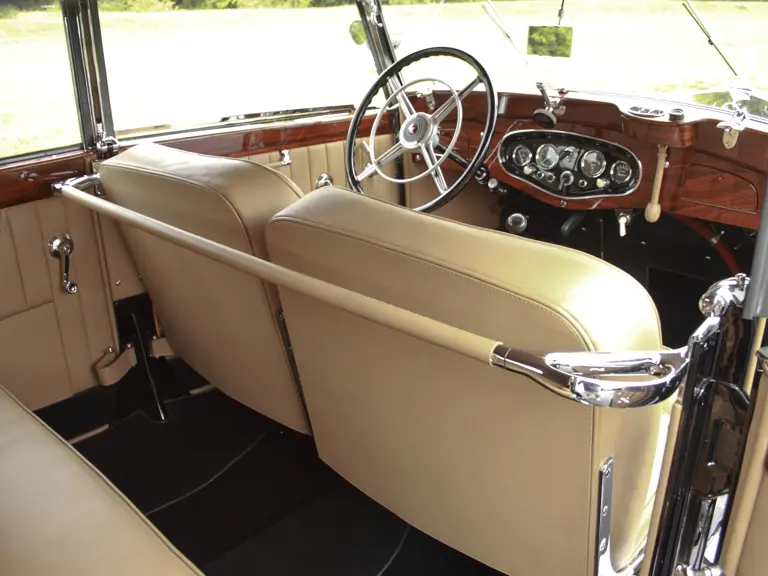
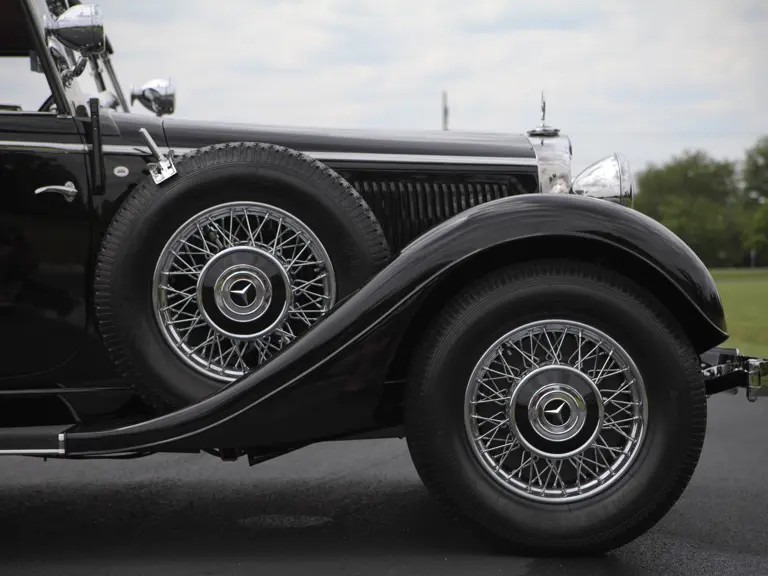
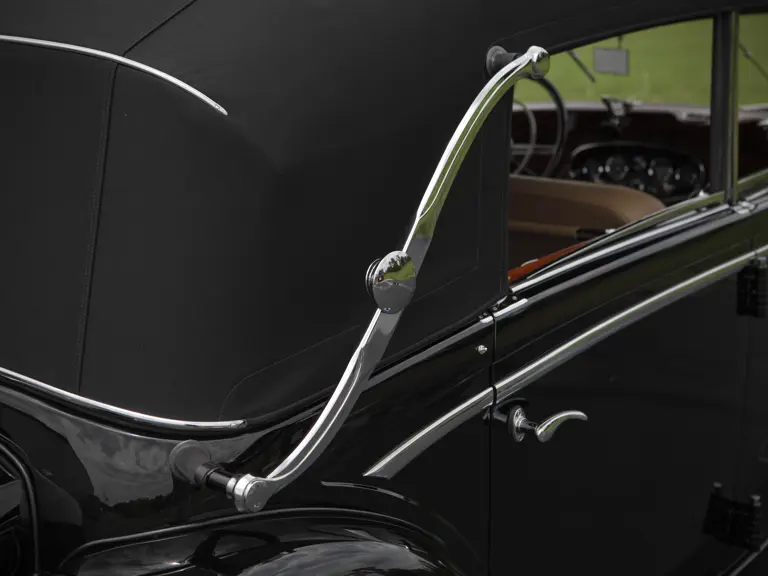
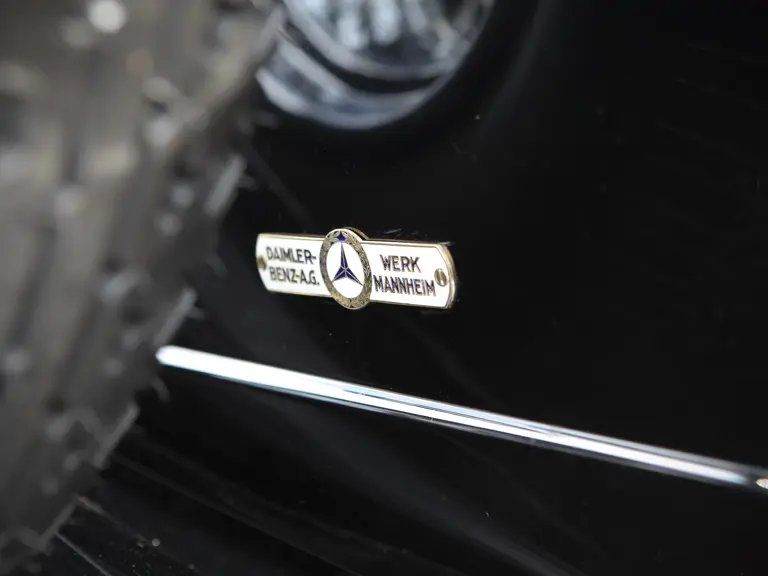
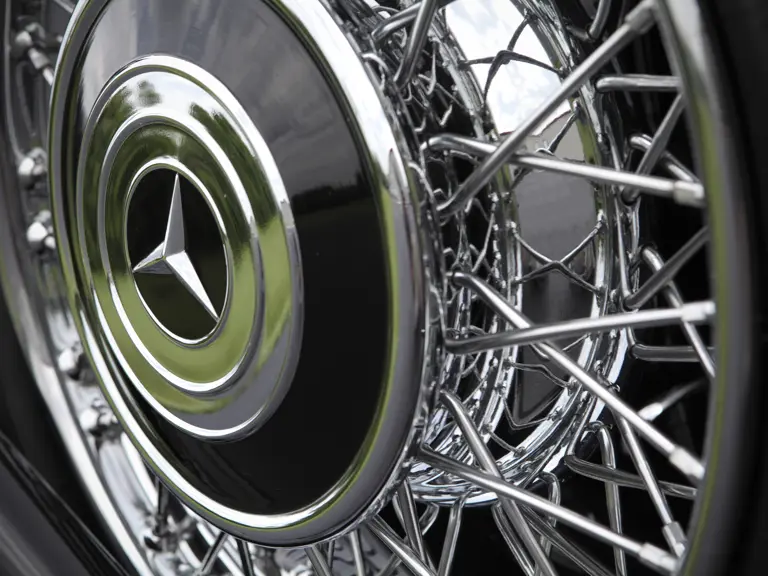
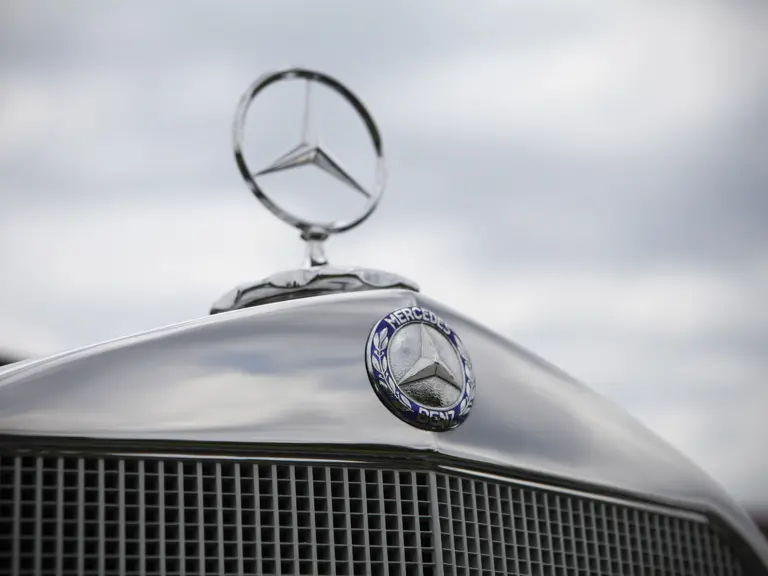
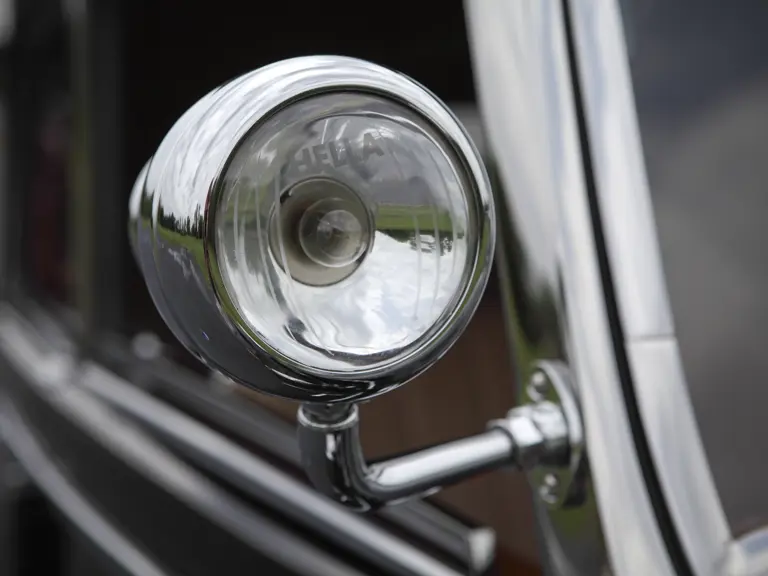
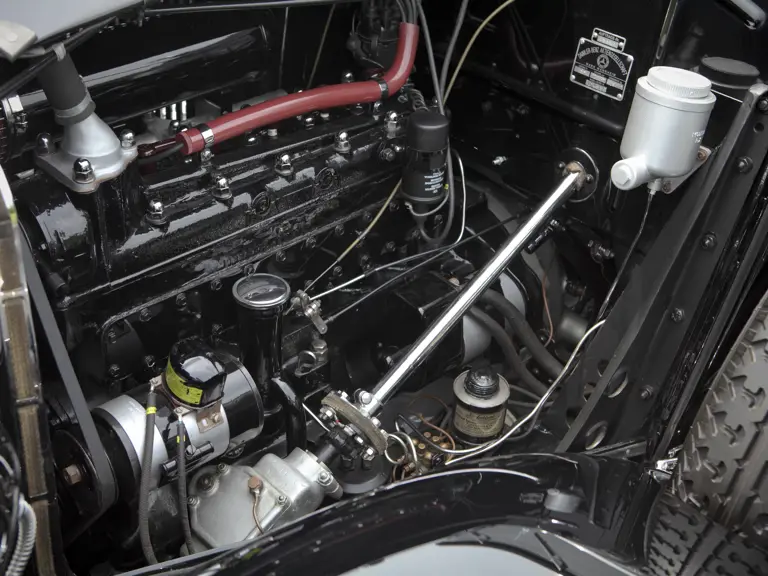



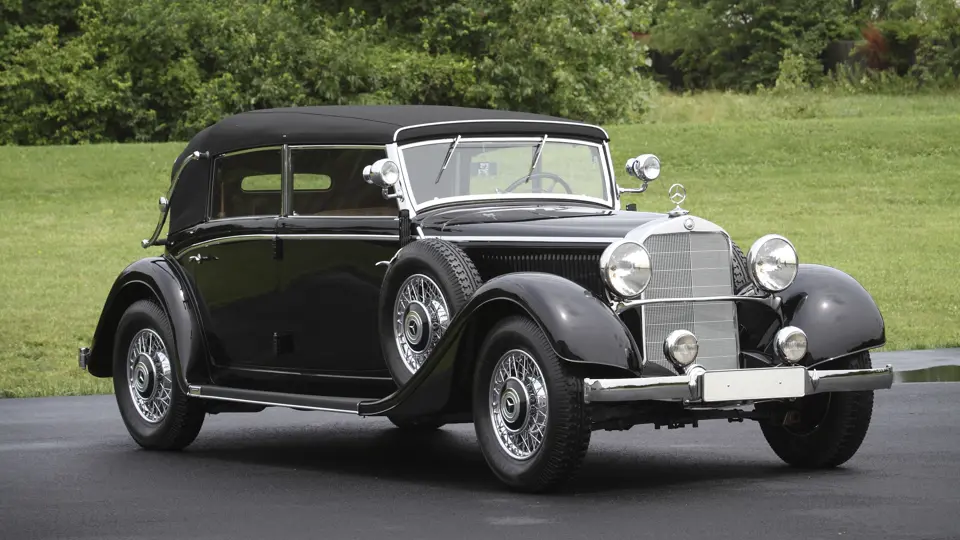
 | Monterey, California
| Monterey, California
